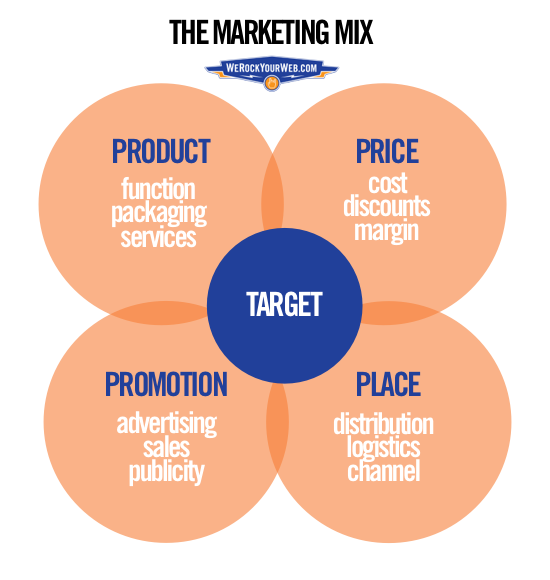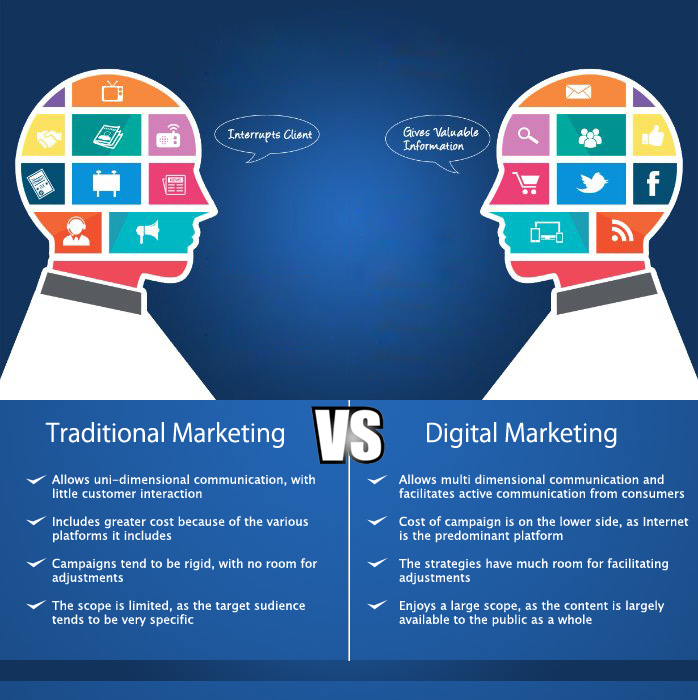The simplest way to understand what is marketing is to identify and meet the needs of consumers. Now as a marketer, what are you supposed to do? As a marketer, you try to identify the needs of the customers and you need to fulfill the needs of the customers. Well, yeah! its that simple.
Dr. Philip Kotler defines marketing as “the science and art of exploring, creating, and delivering value to satisfy the needs of a target market at a profit. Marketing identifies unfulfilled needs and desires. It defines, measures and quantifies the size of the identified market and the profit potential. It pinpoints which segments the company is capable of serving best and it designs and promotes the appropriate products and services.”
So, what is marketing, anyway?
Marketing refers to the activities of a business related to buying and selling a product or service. It involves finding out what consumers want and determining whether it is possible to produce it at the right price. The company then makes and sells it.
The 4 Ps of Marketing
The 4 Ps of marketing is a famous concept that summarizes the 4 basic pillars of any marketing strategy:
- Product
- Price
- Place and
- Promotion.

Product
Product refers to an item or items the business plans to offer to customers. The product should seek to fulfill an absence in the market, or fulfill consumer demand for a greater amount of a product already available. Before they can prepare an appropriate campaign, marketers need to understand what product is being sold, how it stands out from its competitors, whether the product can also be paired with a secondary product or product line, and whether there are substitute products in the market.
Price
Price refers to how much the company will sell the product for. When establishing a price, companies must consider the unit cost price, marketing costs, and distribution expenses. Companies must also consider the price of competing products in the marketplace and whether their proposed price point is sufficient to represent a reasonable alternative for consumers.
Place
Place refers to the distribution of the product. Key considerations include whether the company will sell the product through a physical storefront, online, or through both distribution channels. When it’s sold in a storefront, what kind of physical product placement does it get? When it’s sold online, what kind of digital product placement does it get?
Promotion
Promotion, the fourth P, is the integrated marketing communications campaign. Promotion includes a variety of activities such as advertising, selling, sales promotions, public relations, direct marketing, sponsorship, and guerilla marketing.
Promotions vary depending on what stage of the product life cycle the product is in. Marketers understand that consumers associate a product’s price and distribution with its quality, and they take this into account when devising the overall marketing strategy.
Marketing refers to any activities undertaken by a company to promote the buying or selling of a service.
If you get right with the basics then it’s very easy for any marketer to market the product/ service.
There comes the marketing concepts, promotional mix, segmentations and strategy everything.
Goals of Marketing
The goals of marketing can be broadly classified into 3 categories –
- A transaction – Flipkart’s Big Billion Day ADs are examples of marketing efforts leading consumers to exchange money for a product/service
- Branding – A lot of you might know Dr. Batra’s, even though you aren’t getting bald, that’s branding
- Awareness – “No shave November” was a campaign to raise awareness about Cancer, and evoke people to donate and save lives, “ALS Ice Bucket Challenge” was to spread awareness about Amyotrophic Lateral Sclerosis (ALS)
Traditional Marketing Vs Digital Marketing in Few words

TRADITIONAL MARKETING
Traditional marketing is a rather broad category that includes many forms of advertising and marketing. It is the most recognizable type of marketing including the advertisement we see and hear daily.
NEWSPAPER: It is a very effective means for advertisement. Combining this type of advertisement between local, state and national print media is a great marketing campaign strategy. There is a separate advertisement department in every newspaper which classifies and designs different advertisements in the paper. Before selecting the newspaper advertiser should take into consideration various factors like coverage of the newspaper, the class of audience and the cost of advertisement.
BILLBOARDS: Billboard or in simple words hoarding is a large outdoor advertisement mostly which is found on highways or on busy roads to attract the people to their products. It contains pictures rather than text messages.
MAGAZINE:These are the important media of communication. Advertisement given in this are more descriptive and attractive. They are usually in coloured form which depicts the product nicely and gives a lasting impression to the readers. There are magazine or journals meant for the general public and spread class of people. There are magazines related to trade, fashion, industry,etc. These have a long life and are good for specific goods advertisement.
Radio: It is a verbal promotion for the product which can be repeated a number of times.
TELEVISION: It is more effective than radio as it has sight and sound. As it is in the form of a picture or video it is more effective and leaves an everlasting impression on the mind of viewers. It is a very costly medium. It has a shorter life span and limited coverage. Back reference to the advertisement cannot be made after its presentation.
FLYERS AND BROCHURES:These are the most widely preferred for special discounts and offers. It is a piece of printed paper which has some offer for the customers.
DIGITAL MARKETING:
It is a marketing of product and services using electronic devices and the internet. Nowadays it is very common and important for the business man as people use digital device rather than visiting a physical shop.
Methods:
- Search engine optimization (SEO)
- Search engine marketing (SEM)
- Content marketing
- Social media marketing
Search Engine Optimization: It is the process of increasing the quantity and quality of the traffic to your website through the organic search engine result.
Content Marketing: It is the marketing that focuses on distributing and creation of valuable and relevant data for the targeted audience online. It is used to attract the customers and to make the base strong or the create and increase the online sale.
Search Engine Marketing: It is the most effective way to grow your business in a competitive market. It is a digital strategy to promote the website by increasing their visibility in search engine result pages through paid advertising.
Social Media Marketing: Social media platforms help to promote the goods and services. It is a very popular means of marketing at present as almost all the people use social site.
TRADITIONAL VS DIGITAL MARKETING
Cost: Traditional market is very costly whereas digital marketing is cost effective.
Duration: Ads duration of traditional market is very limited but digital marketing is having long duration.
Customer: In traditional marketing customer is not defined whereas in digital marketing customers are qualified.
Niche: In traditional marketing you are looking for customers but in digital marketing customers are looking to you,your products and services.
Reach: Traditional marketing is having limited audience whereas digital marketing reaches out to the maximum people.
Communication: Delayed communication is there in traditional marketing totally different in digital marketing.
It’s all about wealth creation, the formula is here
Marketing campaign’s success is judged based on the number we generate on the campaign. It is important to follow the right marketing tactics to get the right results.
Once we select the niche, We should attract the audience with the content. Its nothing but getting his attention. This is where the trust is created. Once trust is created he will be ready to buy our products/ services.
Integrated Marketing is Important
Integrated Marketing Communications is a simple concept. It ensures that all forms of communications and messages are carefully linked together.
Promotion is one of the Ps in the marketing mix. Promotions has its own mix of communications tools.
All of these communications tools work better if they work together in harmony rather than in isolation. Their sum is greater than their parts – providing they speak consistently with one voice all the time, every time.
Here is one of the example of the good integrated marketing approach
Uber
What do they do?
Uber is a peer-to-peer ridesharing, taxi cab, food delivery, bicycle-sharing, and transportation network.
Referral program strategy
Uber had a huge challenge. They had to make sure they have enough demand and supply of both drivers and those wanting a ride. For those wanting a ride, they created a double-sided reward strategy where one can send a FREE ride to friends. I mean who will say no to a FREE ride?
This strategy is very clever because what Uber did was they actually solved one side of the problem. They were artificially creating demand for rides with the hope of getting repeat purchases from the referred customers. How? When you refer someone to Uber, both you and your friend will get free credit in the Uber world! This credit can be redeemed into free rides hence further fueling demand for rides.
At some point, Uber tried to implement a referral program for the other chain – the driver supply. They were enticing their existing user base to refer a Lyft driver (Lyft is a competitor of Uber) for a $250 credit + $500 reward for the driver who switches fro Lyft to Uber. This kind of referral campaign is very unusual from our experience but very interesting indeed. If Uber were doing it, most probably it was giving positive results.
Who you are makes the difference, So Personal Branding is must
Never Hesitate to Market Yourself
Before proceeding to the personal branding establishment, the meaning of personal branding should be cleared. Personal branding is an effort to create and influence the public perception of an individual by differentiating them among their competitors, increase the circle of influence, and have a larger impact.
The concept of personal branding comes naturally from you. You must know how to differentiate your brand from your competitors, identify your audiences, and connect with them by telling some fun facts about your brand which will make them intact with you and your organization. Rather this can make you have new customers.
The steps you need to build your brand are:
- build your foundation: the key element for the foundation should be about your brand vision, brand mission, the message behind it, etc.
- Identify your target audience: the mistake that you can make is appealing to everyone. find your target audience and attract them to your brand!
- create an irresistible offer: give them exciting offers that will help your audience solve a specific problem or to get desirable results.
- optimize your website: having a website is a very important component if you want to establish your presence. this will help you to stay connected to your audiences and know about their interests.
- have a content strategy: content is very important because this will be the message that you want your audience to see it. That is, it will represent you and your brand!
- have a visibility strategy: visibility can be increased by guest blogging that sometimes writing on some other’s blog, public speaking, etc.
- build a community: focus on becoming a leader to a community. define your target audience and build your community to let them also share their views, ideas, and many more.
Great Examples of Personal Branding
They are the ones you recognize by one very important feature. For example, Einstein will instantly come to mind if you see the formula for Energy in general relativity.
Gandhi = the glasses
Jobs = the turtleneck
Hepburn = the long filter cigarette
James Dean = the leather jacket attitude
Dali = the moustache
Chaplin = the other moustache, the hat and the cane
It’s these things that people associated them with. What’s interesting is that they would still be famous if they didn’t have any of these objects associated to them. It’s their actions that made them famous. It’s what people made of them that built their personal brand.
The objects are just hooks that everybody found distinctive about them. It’s just how Lady Gaga now is the meat lady, or Bieber is the boy who should’ve been a girl.
Great feats make you popular. Uniqueness makes you stand out. Everybody has a personal brand whether they want it or not. What these people did was to make their unique style a statement of life. Monroe became the symbol of powerfull women, Jobs the symbol of tehnological innovation, Einstein the definition of science and so on.
You cannot promote something without having great endeavors and uniqueness.
What Marketing Isn’t
Marketing is not sales. Yes, it leads to sales by getting the word out there through branding and advertising, via both the written word and images, and then luring prospective customers in, but a marketer is not the one to actually interact with the sales lead—that’s the job of the sales person in the sales department.
Marketing is also not creative nor does it belong in the content department. Again, marketers work closely with these departments by sharing the analytics and insights they’ve gained from the information and research they’ve produced, but a marketer is not the one to actually produce or design the content.
Its important to have Marketing as a skill
Marketing is the most important skill of all is to be able to put yourself in the position of your customers so that you can look at the product, service or experience you’re marketing through their eyes and feel and respond to it in the same way that they feel and respond.
Likewise how we invest time for learning how to save money, invest time in learning new skills, relationships it’s important to market yourself.
Lastly always remember:
Business = Sales = Number of people buying * Frequency
Number of people buying = Purchase Intent * Number of people knowing about the product * Availability
PI= A function of Product and Promotion and Price
Reach of product = A function of Promotion and Place
Availability = A function of Place and Product ( Some might argue on the Product part )

